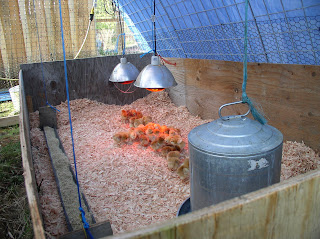 |
| Snow kept falling all day |
Yes, it has arrived, early this year with snow flurries yesterday morning. 24 degrees out with a full moon when I did my 30 minute run this morning, and I can assure you it's cold, but clear. I went out to milk Nettle and let the birds out about 7:30am and it started to snow. Been snowing all day and we have almost 3 inches. With the forecast being continued cold for the next two days, with lows in the teens and highs in the 20's, we should have what is on the ground for awhile.
 |
| Chickens are hiding but the ducks and geese don't care |
Last month we received a charge of $14 from Microsoft on our credit card and couldn't figure out what it was for. We called the number listed on our credit card statement and got a recording saying they did not accept phone calls, so we contested the charge. A week later our farming website disappeared! So that was what it was for. Time to build a new website.
I tried to use the Google free website but it was not very user friendly and the Help templates were useless (I love Google's Blogger and Google's Picasa), I finally settled on Yola. I finished it over the weekend and put a link to it above.
I recently registered with Dark Days Challenge and sent out my first email to the group but it got kicked back saying I was not authorized to use it. Oh well. The Dark Days Challenge is encouraging people to purchase all or most of their food locally. For Thanksgiving here is what is going on:
We produce about 80% of our own food on our little farm, and nearly all of our yearly protein, but have not grown turkeys yet, maybe next year. We bought a heritage turkey (Blue Slate) from Laughing Ducks & Barking Dogs Farms in Oak Harbor (about 30 miles from our place) this year. We met the farmers on a local farm tour this year. EXPENSIVE, at $8 a pound. I saw an ad on a Safeway flier for turkeys at $.29 per pound, oh well…but we believe in supporting the small, local farmer as much as we can; and I know how much work is involved.
We do the Thanksgiving gathering on the Friday after as we have five grown children (with five grandchildren – OMG I must be getting old!) and the tradition is to come to the farm on Whidbey the day after, letting the married ones visit the other family on Thanksgiving.
 |
| My Granddaughter Olive gathering chicken eggs |
Here is the recipe for cooking it:
· Day before cooking, combine all brine ingredients, except ice water, in a stock pot and bring to a boil. Stir to dissolve solids, remove from heat, cool to room temperature and refrigerate until thoroughly chilled. Late the night before or early on day of baking combine brine and ice water in a clean 5 gallon bucket or similar. Place thawed turkey breast side down in bucket, cover and set in a cool place or refrigerator for 6 -8 hours. Turn turkey over half way through brining.
· Preheat oven to 450F. Combine apple, onion, cinnamon stick in microwave proof bowl and heat for 5 minutes. Remove turkey from brine and rinse inside and out with cold water, discard left over brine. Place bird on roasting rack and pat dry.
· Add steeped aromatics, rosemary and sage to cavity. Tuck wings back and coat whole bird with canola or other neutral oil. Roast on lowest level of oven at 450F for 30 minutes. Remove from oven and place double layer of tin foil over breast.
· Return to oven, reducing temperature to 350. A 14-16 pound turkey will take approximately 2 1/2- 3 hours (be sure to check temperature and juices run clear) Internal thigh temperature should read about 150-160F. Remove from oven and let rest for 15 minutes before carving. (Note: USDA recommends poultry be cooked to 160-180F, but these temps will dry out a heritage. Heritage turkeys are much freer of disease and bacteria, unlike commercially raised birds, and do not need the extreme temps to make them safe to eat.)
Candied Ginger Brine for Heritage Turkey
1 cup Kosher salt 1/2 cup light brown sugar
1 gallon vegetable stock 1 TBSP black peppercorns
1/2 TBSP all spice berries 1/2 TBSP candied ginger
1 gallon ice water
For Aromatics
1 red apple 1/2 onion
1 cinnamon stick 1 cup water
4 sprigs rosemary 6 sage leaves
 |
| Snowshoe is a handsome Nubian buck of ours |





































